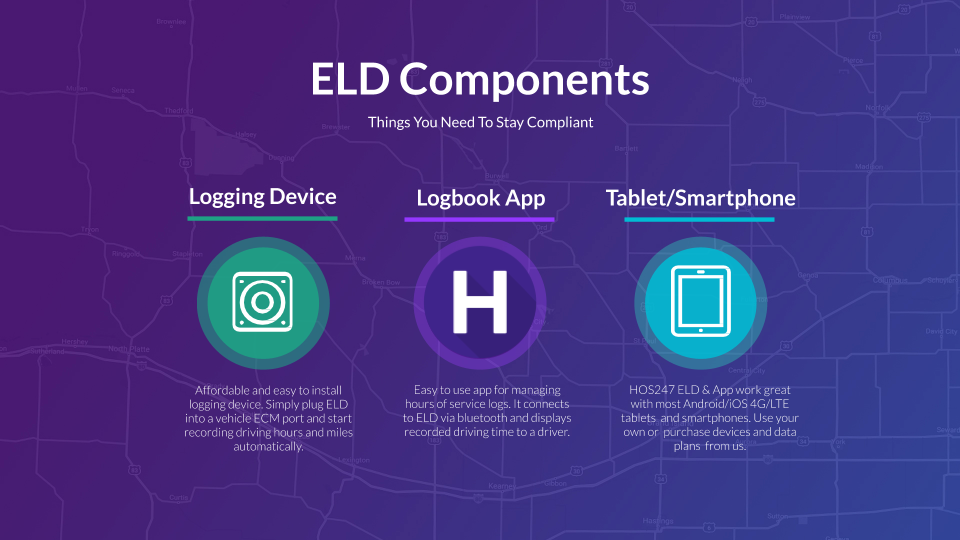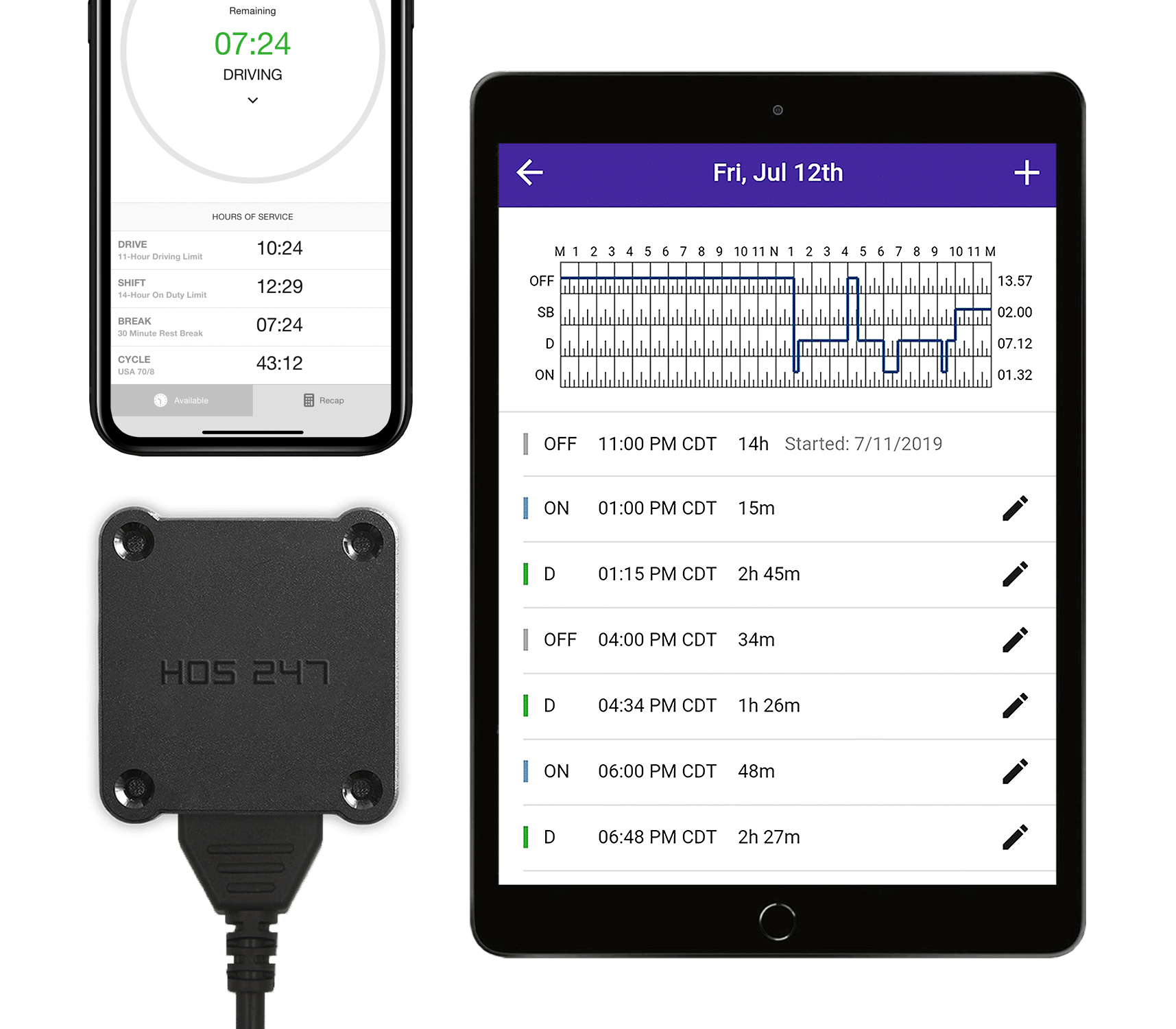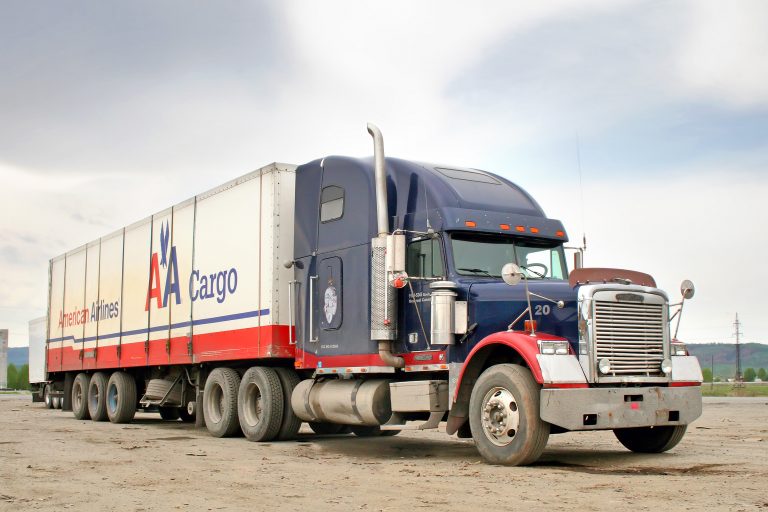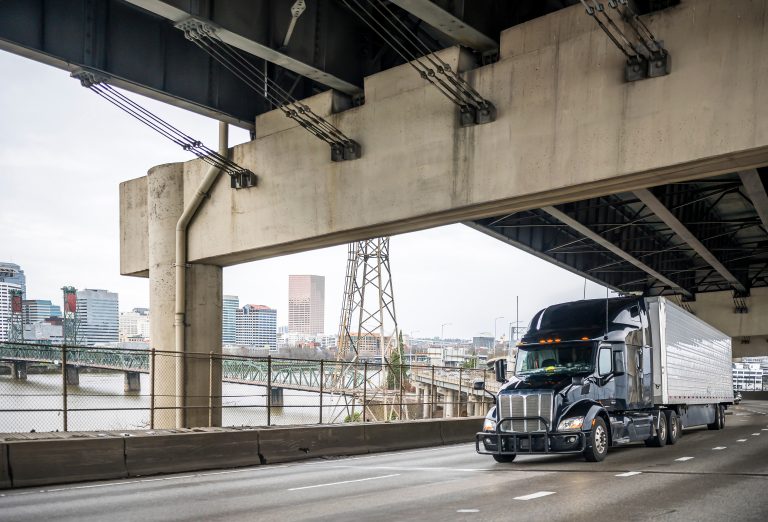ELD for Commercial Vehicles in Canada: How to Find Systems That Work With Your Operation
Electronic logging devices (ELDs) aren’t going anywhere — they’re now a permanent part of trucking life. Whether you embraced the mandate early or held onto paper logs until the last possible moment, the reality is that every commercial driver needs an ELD that works with their operation, not against it.
The challenge lies in finding systems that actually understand what professional truckers need: reliability, simplicity, and support when things go wrong. While some elog apps feel like they were designed by people who’ve never spent a day behind the wheel, others demonstrate genuine understanding of commercial driving realities.
This guide cuts through the marketing noise to help you understand what makes an electronic logbook worth your time and money. We’ll cover the essential basics every trucker should know, the features that actually matter in real-world driving, and how to choose a system that enhances your operation rather than complicating it. We’ll also look at common implementation challenges and how the right ELD for commercial vehicles can actually improve your bottom line.
Most importantly, we’ll show you how to find an electronic logging solution that respects your experience as a professional driver while keeping you fully compliant with Transport Canada regulations.
Do you have any questions? Talk to ELD Advisor: 650-405-3372 or Request Callback
ELD Basics: What Every Trucker Needs to Know
As you probably know, an electronic logging device connects directly to your truck’s engine control module (ECM) through the diagnostic port — the same connection mechanics use for diagnostics. This system consists of three essential components:
- ELD hardware. Physical device that plugs into your truck’s diagnostic port and automatically records engine data.
- Mobile ELD app. Smartphone or tablet software that displays your HOS information and allows duty status changes.
- Data transmission. Secure upload of driving records to Transport Canada-approved databases for inspection purposes
Unlike the old automatic onboard recording devices (AOBRDs), modern electronic logbooks automatically switch your duty status to “driving” when the vehicle moves at 5 km/h or faster. They maintain detailed, tamper-resistant records that address the compliance gaps paper logs allowed.
Who Must Use an ELD and Who’s Exempt
The ELD mandate applies to most federally regulated commercial drivers who were previously required to keep paper logs. This includes drivers operating commercial vehicles across provincial or international borders.
Several important exemptions exist. Drivers operating vehicles manufactured before model year 2000 can continue using paper logs. Drivers operating within 160 km of their home terminal and returning daily (short-haul exemption) remain exempt, as do drivers who are subject to provincial regulations only (intra jurisdictional transport).
These exemptions come with strict conditions. Violate the requirements for your exemption, and you immediately fall under the ELD mandate. Many drivers who thought they qualified for exemptions discovered they actually needed elogs when inspected.
The Real Cost of Non-Compliance
Transport Canada penalties hit hard and fast. Operating without a required ELD for commercial vehicles can result in escalating fines, vehicle detention, and potential out-of-service declarations. Falsifying logs can also result in substantial penalties and possible prosecution under federal regulations.
Beyond direct fines, non-compliance affects your carrier safety rating, insurance premiums, and ability to secure reliable contracts. Violations are recorded in your National Safety Code (NSC) profile, impacting everything from roadside inspection frequency to audit risk. Even expensive ELD systems pay for themselves by preventing a single major violation.

What Makes a Good Commercial Vehicle ELD
Professional truckers need electronic logging systems that enhance operations rather than creating daily obstacles. Several key factors separate quality systems from problematic alternatives.
- Ease of use. Quality systems feature large, clearly labeled buttons and logical menu structures that let you update your status with two taps, not ten.
- Reliability. Quality hardware withstands the vibrations and temperature variations of commercial trucking without constant reconnection issues. They also maintain consistent ECM connections and stable data transmission, preventing compliance gaps that can result in violations.
- Customer support. Technical issues don’t follow business hours, so quality providers staff support teams accordingly. Look for companies that employ reps who understand both technology and trucking operations during actual driving hours.
- Installation. Setup should be straightforward plug-and-play taking minutes, not hours. The device should begin collecting data immediately upon connection without requiring complex wiring or professional installation.
- Pricing transparency. Clear monthly costs without hidden fees for essential features prevent budget surprises. Many providers advertise low prices then add charges for basic capabilities like activation, customer support, or compliance updates.
- Data security. Electronic logbooks collect detailed information about routes, timing, and business operations. Ensure your provider uses secure data transmission and storage with clear policies about data access and sharing to keep your operational information private.
- Compatibility. Your ELD should connect reliably across various truck makes, models, and years, providing accurate data recording without connectivity headaches or compatibility issues.
The right ELD becomes an asset that simplifies compliance and improves daily operations. Focus on systems that prioritize driver experience while maintaining Transport Canada compliance, and avoid providers that compromise on essential features to offer lower prices.

HOS247 ELD: A Reliable Choice for Professional Truckers
At HOS247, we developed our ELD system with commercial drivers in mind, and this shows in practical features that work in real trucking conditions — not just on paper.
- No-contract policy. We don’t lock you into long-term agreements. Our month-to-month or yearly service gives you control over your subscription without penalties or commitment.
- Two-week risk-free trial. Try the full system in real operating conditions before you decide. You’ll get complete access to all features to evaluate how it performs with your routes, vehicles, and operation.
- Multilingual support, seven days a week. Our support team speaks English, Spanish, Russian, and Polish and they’re available Monday through Sunday. You won’t be stuck with chatbots or automated menus when something goes wrong on the road.
- Callback policy. If your support call drops, we’ll call you back. No need to start over or wait on hold again.
- Driver-friendly app. The HOS247 app is designed for quick, accurate use. Status changes take two taps, logs are easy to access, and the interface is built for drivers — not software engineers.
- Reliable hardware. Our devices connect quickly through your vehicle’s diagnostic port and stay connected through long shifts and varied conditions. They’re built to handle heat, vibration, and daily wear.
- Automatic compliance updates. We keep the system aligned with Transport Canada regulations so you don’t have to worry about falling behind on updates or rule changes.
- Integrated GPS and IFTA tools. HOS247 offers GPS tracking and automated IFTA mileage calculations to reduce paperwork and improve visibility. No extra systems or separate apps are required.
- Fleet-friendly design. The platform scales with your business — whether you’re an owner-operator or managing multiple drivers — and keeps things simple as you grow.
HOS247 is built for working truckers. We focus on keeping your operations compliant, your logs accurate, and your daily tasks manageable.
How to Choose the Right ELD for Your Operation
Selecting the right commercial vehicles ELD requires honest assessment of your operational needs and realistic budget considerations.
Operational Considerations
Different trucking operations require different ELD capabilities, and understanding your specific needs prevents costly mismatches. Long-haul operations benefit most from route optimization and IFTA automation, while local delivery prioritizes simple duty status changes and minimal complexity. Solo operations need different features than team driving arrangements, particularly around driver handoff procedures and shared vehicle management. US-Canada operations require providers familiar with both regulatory systems and cross-border compliance requirements. Fleet size also matters significantly — single truck needs differ from multi-vehicle management requirements in terms of dashboard complexity, reporting capabilities, and administrative overhead.
Budget Reality Check
Calculate total cost of ownership beyond advertised monthly fees. Factor in hardware costs, installation expenses, data plan requirements, and potential overage charges. Consider the cost of technical support, training, and feature upgrades that may become necessary.
Many systems appear cheaper initially but add costs for essential features like customer support, compliance updates, or GPS tracking. Include switching costs if you need to change providers later — some companies make leaving expensive through equipment requirements or data transfer limitations.
Integration and Growth Planning
Verify your chosen ELD works with existing fleet management software, dispatch systems, or accounting platforms. Some providers offer integration capabilities that streamline operations, while others require manual data transfer between systems. Integration saves time and reduces data entry errors that can cause operational problems.
Consider future business growth when evaluating systems. Choose elog providers that can accommodate expansion without penalty fees or system limitations. Features valuable for single trucks may become essential as operations expand. Systems that regularly update and add features provide better long-term value than static solutions that become outdated quickly.

Common ELD Implementation Challenges and Solutions
Even well-designed commercial vehicle ELDs present implementation challenges that require planning and patience to overcome effectively. Let’s discuss some of them.
Driver Resistance to Technology
Many experienced drivers feel overwhelmed by new technology or worry that ELDs will complicate their daily routines.
Solution: Choose systems with intuitive interfaces that require minimal training. Look for providers that offer comprehensive driver education and emphasize how electronic logs can actually simplify compliance rather than complicate it.
Hardware Connectivity Issues
Unreliable connections to the ECM port can create compliance gaps and frustration during operations.
Solution: Select systems with proven hardware reliability and stable connectivity across different truck makes and models. Ensure the provider offers quick hardware replacement and responsive technical support.
Hidden Costs and Fee Structure
Many ELD providers advertise low monthly rates but add charges for essential features like customer support, GPS tracking, or compliance updates.
Solution: Calculate total cost of ownership including all necessary features. Choose providers with transparent pricing and no hidden fees for basic functionality.
Inadequate Customer Support
Technical issues often occur during driving hours when standard business support isn’t available, leaving drivers stranded with compliance problems.
Solution: Prioritize providers offering effective support in your desired language and staff who understand both trucking operations and ELD technology.
Complex Installation Requirements
Some devices require professional installation or complex wiring that creates downtime and additional costs.
Solution: Look for plug-and-play systems that connect directly to standard diagnostic ports without requiring additional wiring or professional installation services.
Successful ELD implementation comes down to choosing providers who understand trucking operations and prioritize driver experience over flashy features. Focus on systems that solve real compliance challenges while respecting your time, budget, and operational requirements.

ELD ROI: How the Right Device Pays for Itself
Quality ELD systems provide measurable financial returns beyond basic compliance requirements through operational improvements and cost reductions.
Direct cost savings include violation prevention, fuel efficiency improvements, and administrative cost reductions. Avoiding a single major HOS violation pays for years of ELD service. GPS tracking and route optimization typically reduce fuel costs by 10-15% through more efficient routing and reduced idle time. Electronic logs eliminate time spent on paper log preparation and submission, reducing administrative overhead for both drivers and office staff.
Operational improvements enhance asset utilization and maintenance planning. Real-time tracking helps optimize truck utilization and reduce empty miles. Better planning capabilities increase revenue opportunities while maintaining compliance. Automated tracking improves maintenance scheduling and reduces unexpected breakdowns that cost time and money.
Revenue enhancement comes from improved safety ratings and shipper relationships. Many insurance providers offer discounts for fleets using ELD systems, recognizing improved safety monitoring and compliance tracking. Better safety ratings from consistent HOS compliance lead to preferred customer status with shippers and brokers, opening access to higher-paying loads.
Quality ELD systems typically pay for themselves within 6-12 months through combined savings and operational improvements, making them sound business investments rather than mere compliance expenses.
Conclusion
The right ELD for commercial vehicles works with your operation to maintain compliance while supporting your business goals. Quality ELD solutions demonstrate genuine understanding of trucking operations through practical features, flexible service terms, and knowledgeable support staff who respect your professional experience.
Look for providers offering no-contract flexibility, comprehensive trial periods, and support teams that understand your operational concerns. The right ELD enhances your professional operation rather than creating daily obstacles or compliance anxiety.

Take advantage of risk-free trial periods to test systems under real driving conditions rather than relying on sales presentations or demonstrations. Your experience as a professional driver provides the knowledge to recognize quality tools – trust that experience when evaluating ELD options.
The right ELD choice supports your success as a professional trucker while maintaining full compliance and competitiveness in today’s regulated transportation market.
Important notice: This article provides general information about Electronic Logging Devices and compliance considerations for educational purposes only. It does not constitute legal advice or official regulatory guidance. Always verify current regulations directly with Transport Canada at tc.canada.ca or consult with qualified legal counsel familiar with Canadian transportation regulations.

I’ve co-founded, built and managed several transportation-related businesses. Now, I’m a founder and CEO of HOS247 – an AI Transportation Platform for trucking companies, freight brokers and other logistics operations. We are transitioning old-style operations to technology-advanced logistics entities and help them to grow their businesses. ELDs (electronic logging devices), fleet tracking and management 2.0 combined with AI-powered dispatch tools.












Transport Canada has introduced the ELD mandate to increase road safety and vehicle security in the industry. These new electronic logging systems are expected to reduce problems such as driver fatigue while enhancing fleet companies’ productivity. Electronic logbooks manage and

User-friendly ELDs and accompanying apps are more important now than ever, as the mandate approaches and driver turnover continues to be a problem for trucking businesses. Difficult to navigate logbook apps make drivers’ jobs more complicated. That is one more

In preparation for full enforcement of the ELD, Canadian carriers are looking for reliable and easy-to-use electronic logging systems. Bring your own device (BYOD) solutions can be a good idea, especially since they allow drivers to use their own phones